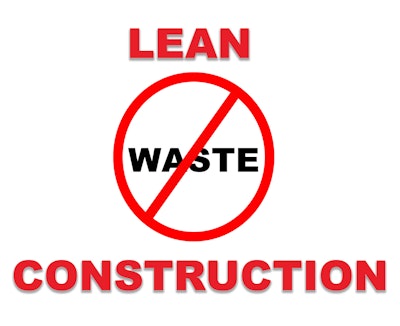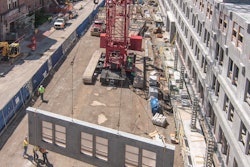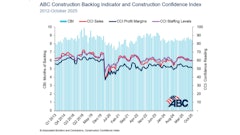
Overproduction is:
Waste that provides more services, effort or energy either before it is needed or in addition to what is needed.
Examples of overproduction could be putting extra laborers on a project, assigning extra tools or equipment that the budget doesn't allow, or purchasing extra material because it is “better be safe than sorry!”
I’ve witnessed this many times with contractors who allow their crew leaders to determine how many men they need on a crew. For the foreman who always had a six-man crew, this same foreman will have a difficult time taking less crew members when sent to a job that needs only four workers.
Overproduction is also a tempting treat for the contractor who realizes that completing the project on time will be difficult to do. The solution used too many times is simply just putting more workers on the project to finish. Sadly, had the project had better planning, preparation and a lean approach to begin with the project would not have needed an overproduction solution.
Overproduction takes place in the office as well. In the pulling together of an estimate the number of hands that “touch” the estimate can be mind-boggling. The larger the contractor, the more hands are likely to touch the estimate if there is no sure process in place.
Even something as simple as the contractor calling his or her office asking for some information, the office administrative staff can all drop what they are doing to get the boss what they need. And if the request is viewed as important enough, all available leaders in the office during this call can stop what they are working on to contribute to the overproduction time and costs.
A real-life example: I was working with a contractor who called from his truck about making sure lunch was delivered to his office by the time he arrived. When I informed him that five individuals were all engaged with carrying out his request, he finally admitted that his leadership style contributed to such a wasteful response.
So, what are some solutions to prevent overproduction?
- Make all employee roles and responsibilities clear and specific — Some overproduction efforts are not intended to be wasteful; in fact, many employees are very loyal and committed to help but tend to forget their roles and responsibilities.
- Develop and maintain an inventory management system for your yard, shop, stock room and trucks — When there is no inventory system in place there is a tendency to pull more items from “stock” or storage because “I don’t want to look for it later.”
- Install a “one check” process to clarify questions and ensure that estimates and other documents have one final look — Be careful but designate one person who has final authority to change the estimates before they leave…not three or more people.
- Be honest, look at current process and simply ask the question, “Can we do this with less people, time, and steps?” — Come on contractors, there can be no “sacred elephants” when it comes to making your company better and lean.
- Lead all leaders to reconsider how many peers need the same e-mail message before sending — Biggest waste of time for most people is the amount of company e-mails “cc’d” to everyone just to keep people in the loop.
- Create improvement plans when eliminating wastes…don’t just delete — People will return to their old habits if you do not insert a better process and then hold people accountable to comply.
A contractor or construction leader who experiences overproduction as the norm is simply not organized. Whether you are leading your company, leading a project or leading a crew, look to eliminate “over-” anything that you do or cause others to do. Valuable labor is wasted as a result of poor planning, organizing or communicating.




















